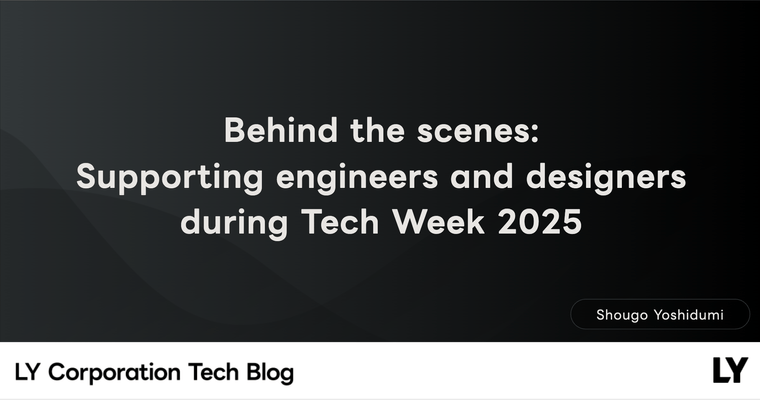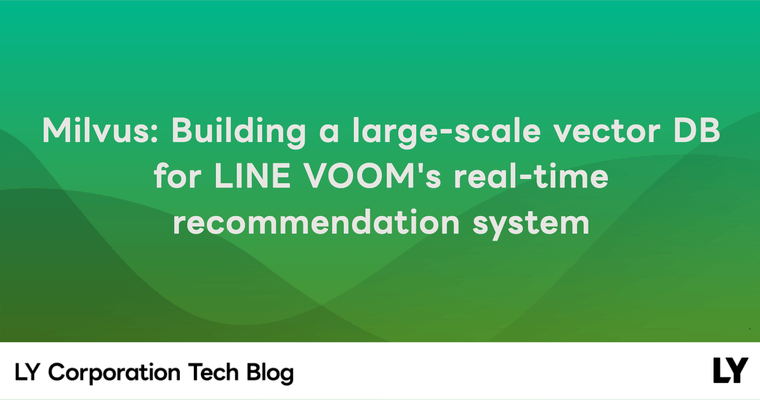Hello. I'm Sumin Shin, a developer working on services related to LLM agents at LINE AI LAB, LINE Plus.
Last July, I participated as one of the "LINE DEV Reporters" at Tech-Verse 2025, held in Tokyo, where I had the opportunity to witness and listen to various technical achievements of LY Corporation firsthand.
One of the main topics of this year's Tech-Verse was AI, with numerous AI-related presentations combined with various examples of AI applied to services. There was a lot of content I could relate to from the perspective of a current developer. It made me question myself, "Can I apply what I've gained here to my actual work?" or "What new services can I create based on this?"
This article won't provide a detailed summary of each presentation but will instead share the moments I found impressive at the event. If you missed Tech-Verse, you can check out the presentation videos and materials on the Tech-Verse 2025 website!
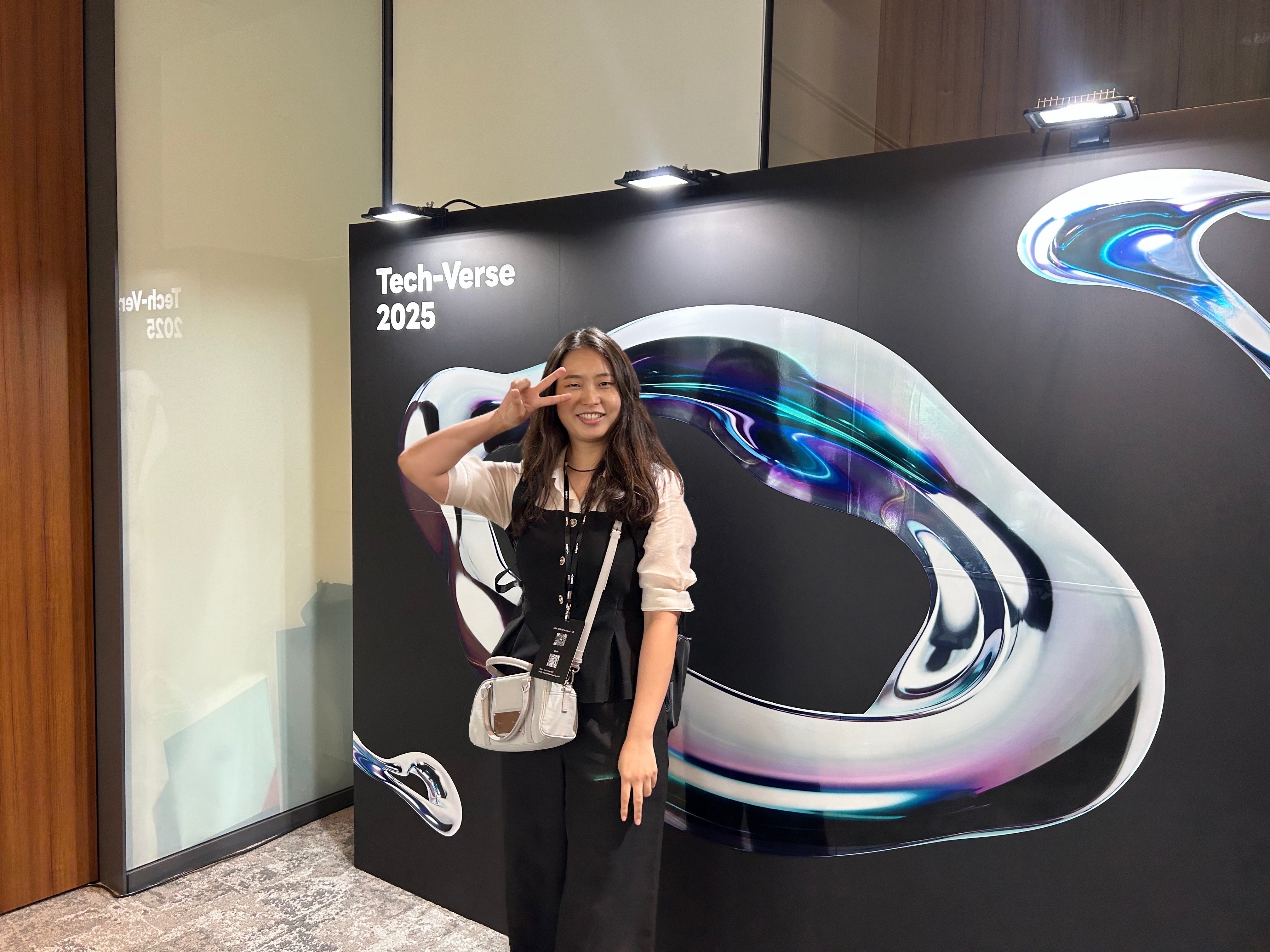
On the way to the venue
On the morning of the event, I left my accommodation near Shinjuku Station and headed for the LY Corporation headquarters on the Tokyo subway. As someone accustomed to remote work, it was my first commute in a while. The crowded subway reminded me of the Seoul Line 9 morning commute, making me think, "Ah, this city isn't easy for commuting either." It was a moment of realization that reality was different from my expectations, and I felt like a real Tokyo office worker, even for a brief moment.
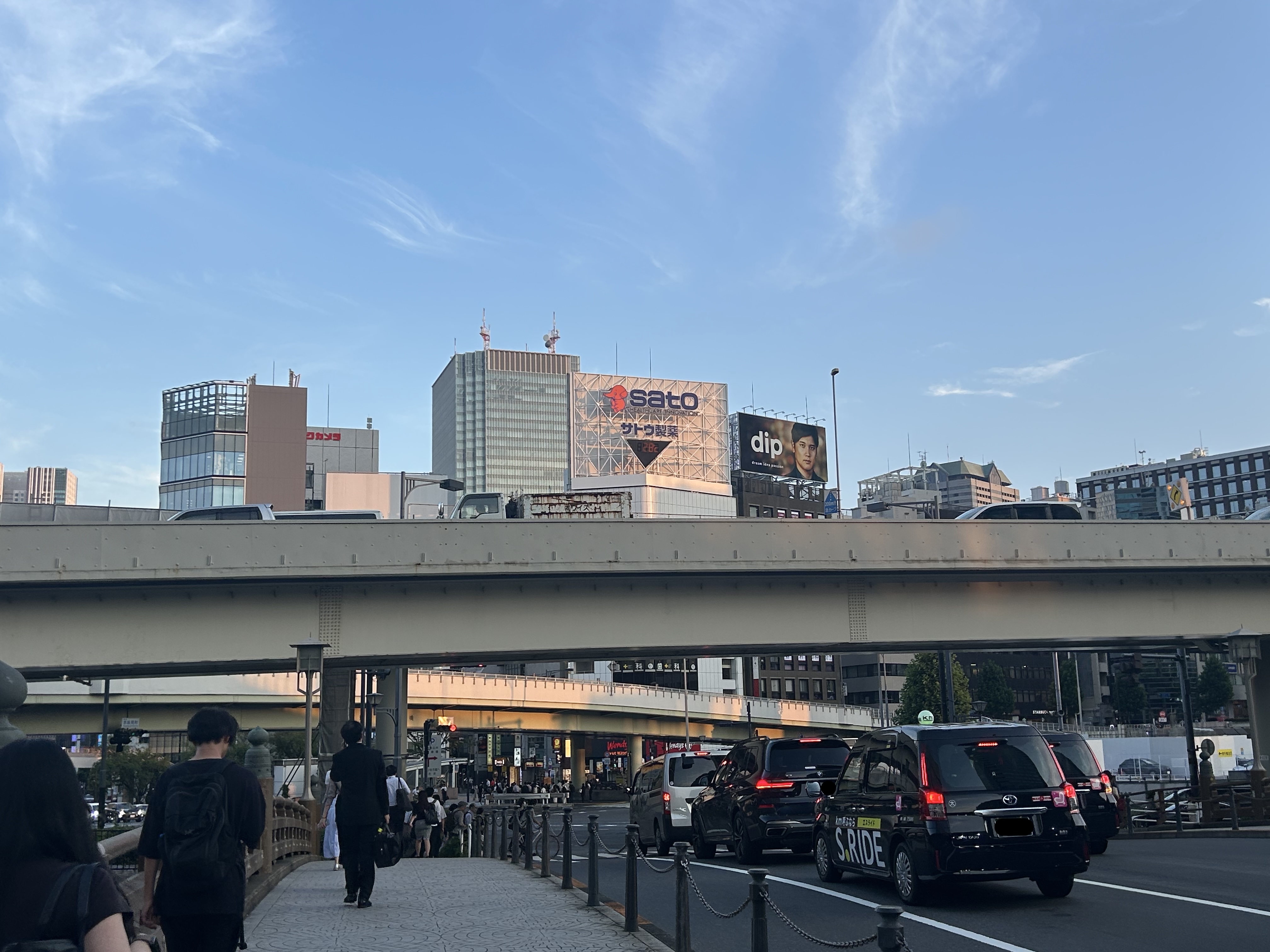

The event venue was on the 4th floor of Tokyo Garden Terrace Kioicho, where LY Corporation is located. It was a relatively spacious area with multiple sessions happening simultaneously. It was my first visit to the Kioicho office. Although it wasn't inside the company area, I felt excited upon arriving at the entrance of the conference hall. The first impression of the venue, greeted by the cool air of the air conditioning after the challenging commute, is still vivid.
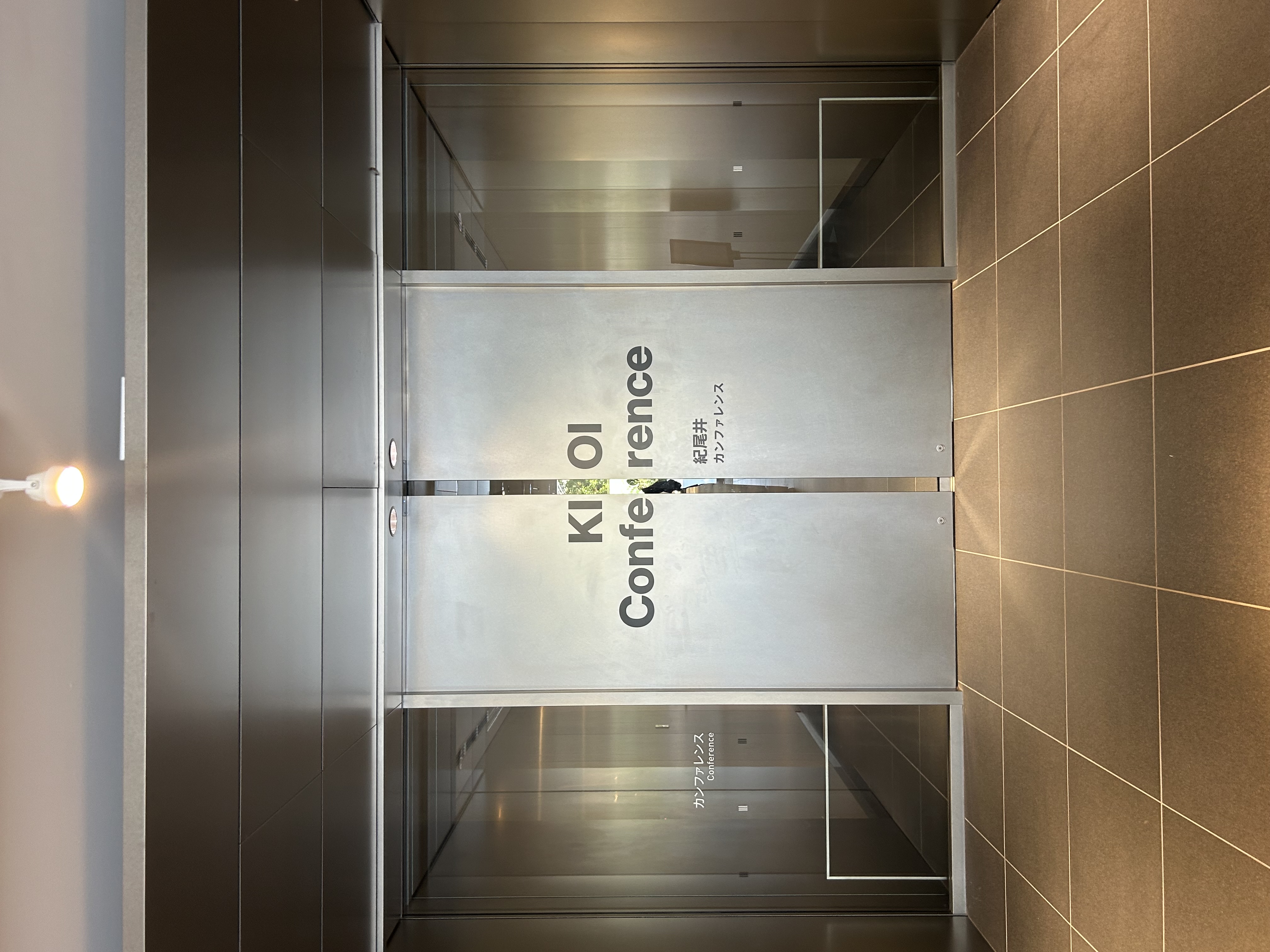
I found my name tag at the reception in front of the venue and entered the event hall. There were a total of six lecture halls, comprising Main Room A, B, C, D, and Seminar Room A, B. Subjects such as AI, security, and server-side were designated in each hall. Sessions on related topics were conducted in sequence at each hall. I mainly spent my time in Main Room A, where the AI sessions were held.
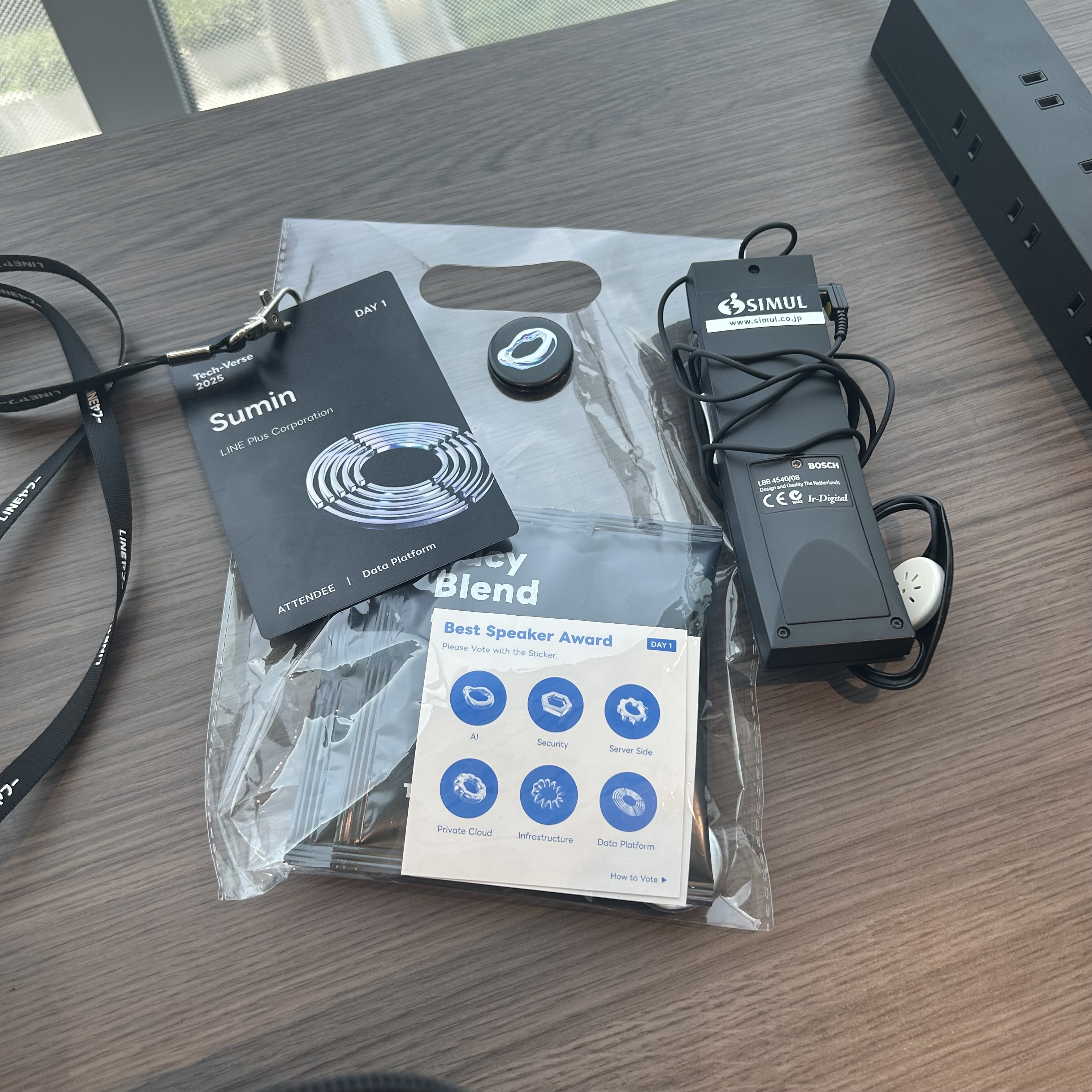
Before the presentation started, seeing numerous participants filling up the keynote presentation hall simultaneously gave me a sense of tension and expectation. In the keynote, the platform integration following the merger of LINE Corporation and Yahoo! JAPAN Corporation was introduced. LY Corporation's future AI strategy and key AI utilization cases were shared. It was like a preview to get a sneak peek at the direction of the subsequent presentations.
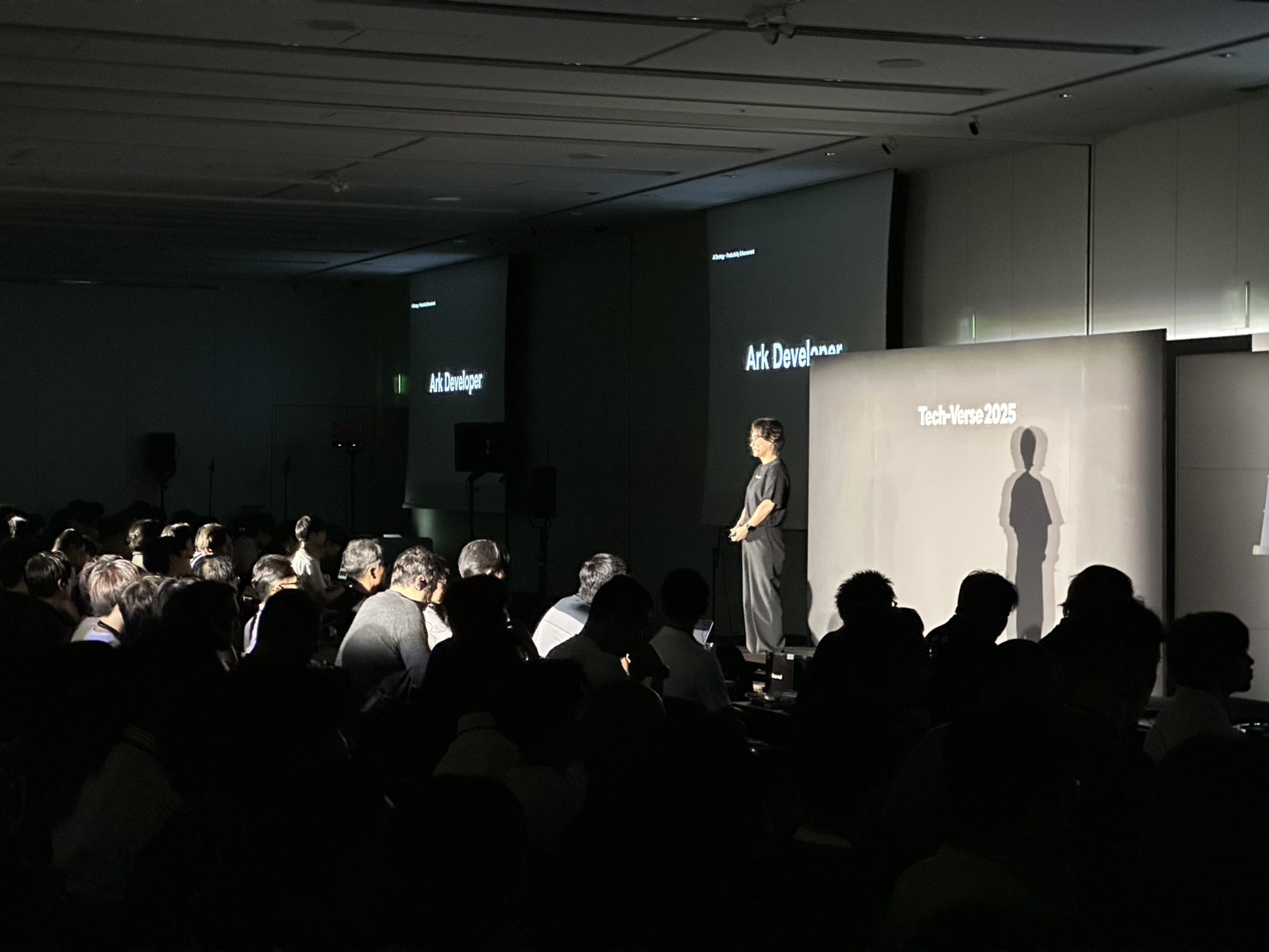
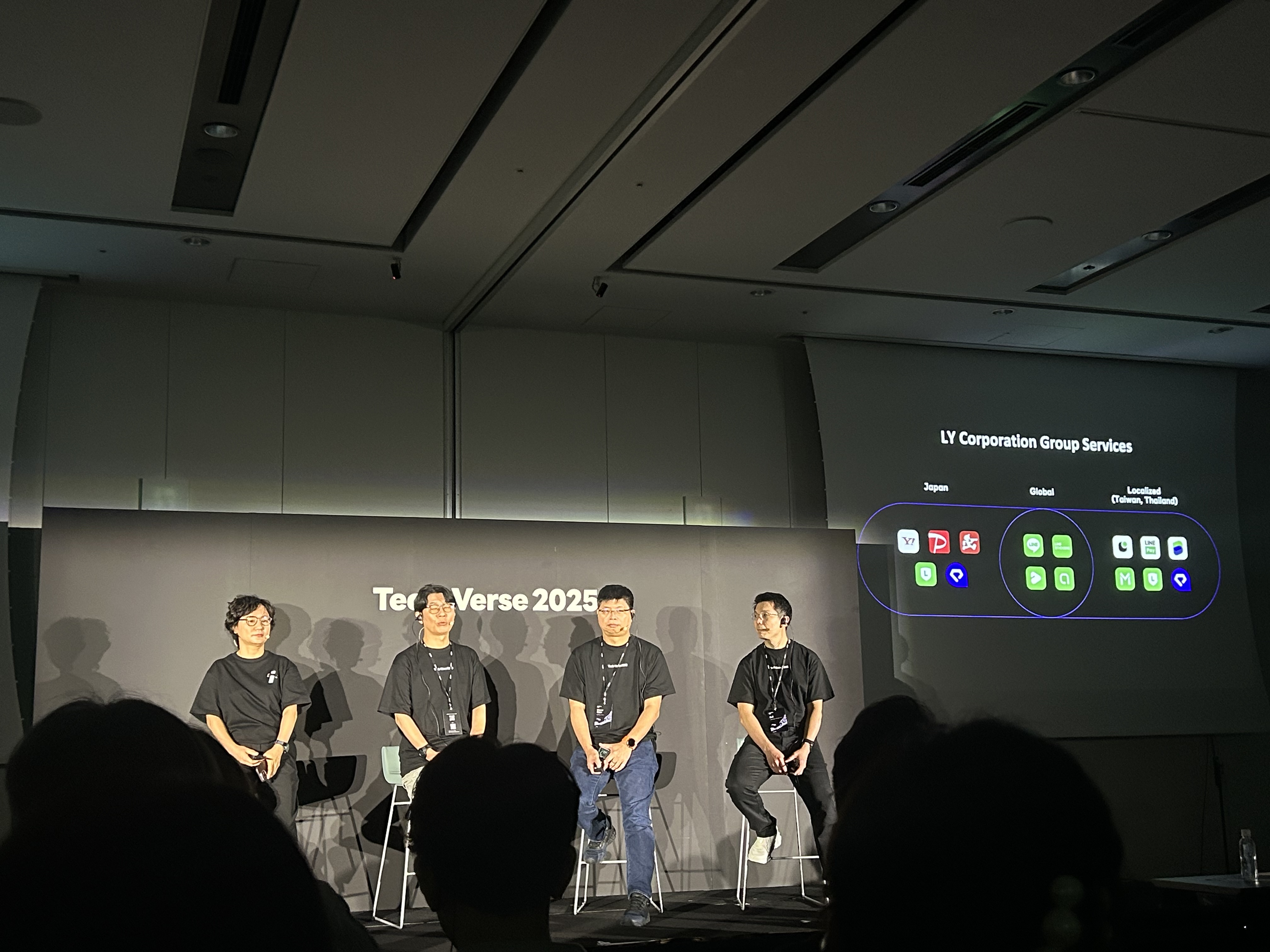
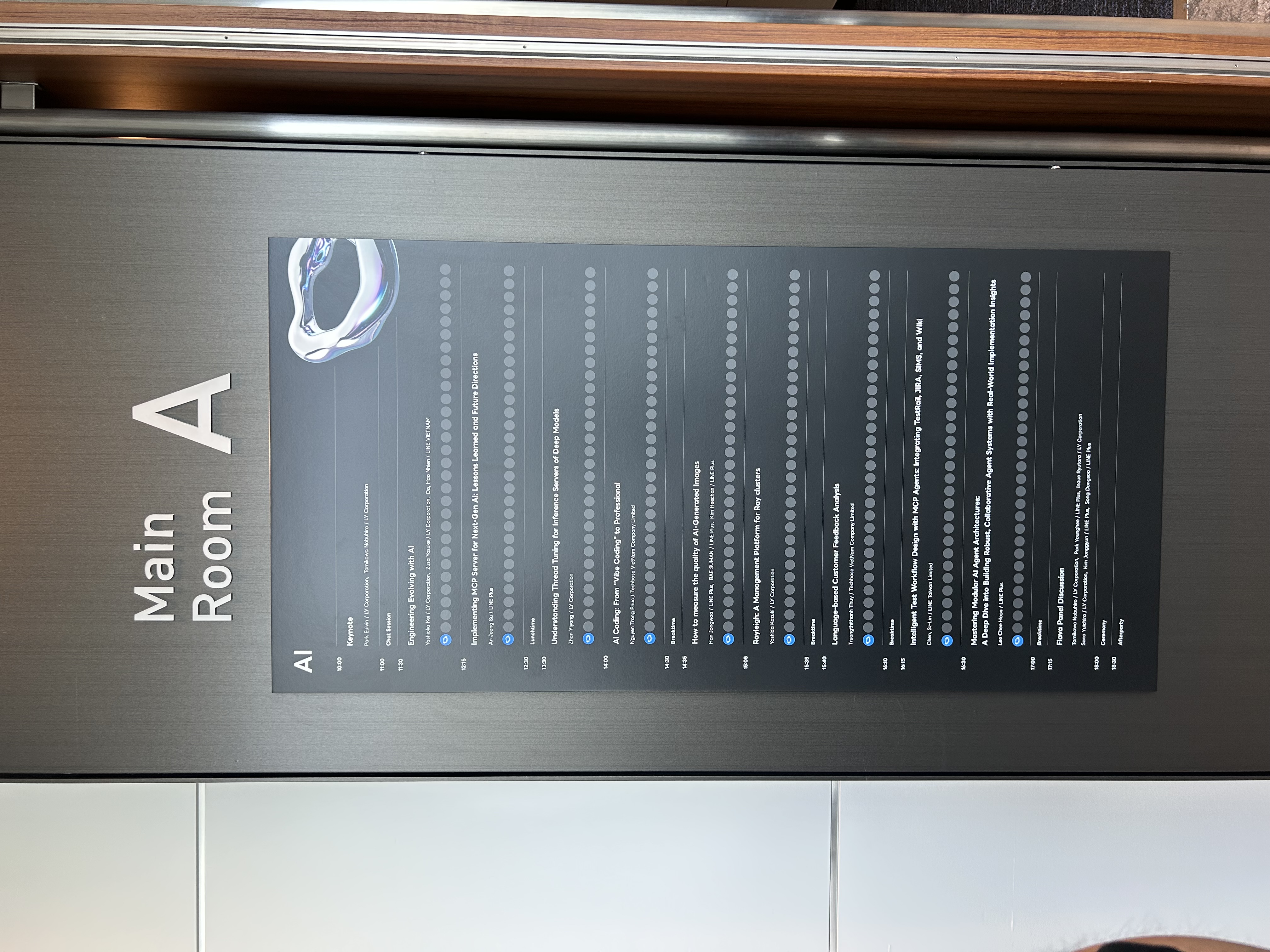
Tech-Verse day 1 - A glimpse at LY Corporation's AI technology prowess from RAG to MCP
After the first day's keynote, presentations in Main Room A focused on applying current AI industry keywords like MCP (model context protocol) and RAG (retrieval-augmented generation) in real-world services. Many presentations focused not on technical trends but on "how they were introduced and what hurdles were overcome", allowing for more immersive listening.
The most impressive presentation was the "Ark Developer" related one titled Engineering evolving with AI. LY Corporation provides employees with optimized AI solutions for development processes under the name "Ark Developer". It supports tasks like code autocompletion, review and security checks, automatic generation of comments and documents, and test code writing through the RAG-based code assistant. I was particularly impressed by the method of streaming internal documents in real-time to provide code-contextual help. There was also a demo showing the integration from GitHub to PR generation. I found it very impressive that the code assistant treated the directory structure like a graph and performed graph analysis when referencing related code, instead of treating the entire codebase as separate documents.
While listening to the presentation, I thought, "This really seems like AI is riding along the entire development cycle with us", and naturally wondered if our team could adopt and utilize similar tools. After the presentation, I asked a new developer from the former Yahoo! JAPAN service team sitting next to me, "Do you actually use this?" I was impressed when he replied, "It feels much better than Copilot."
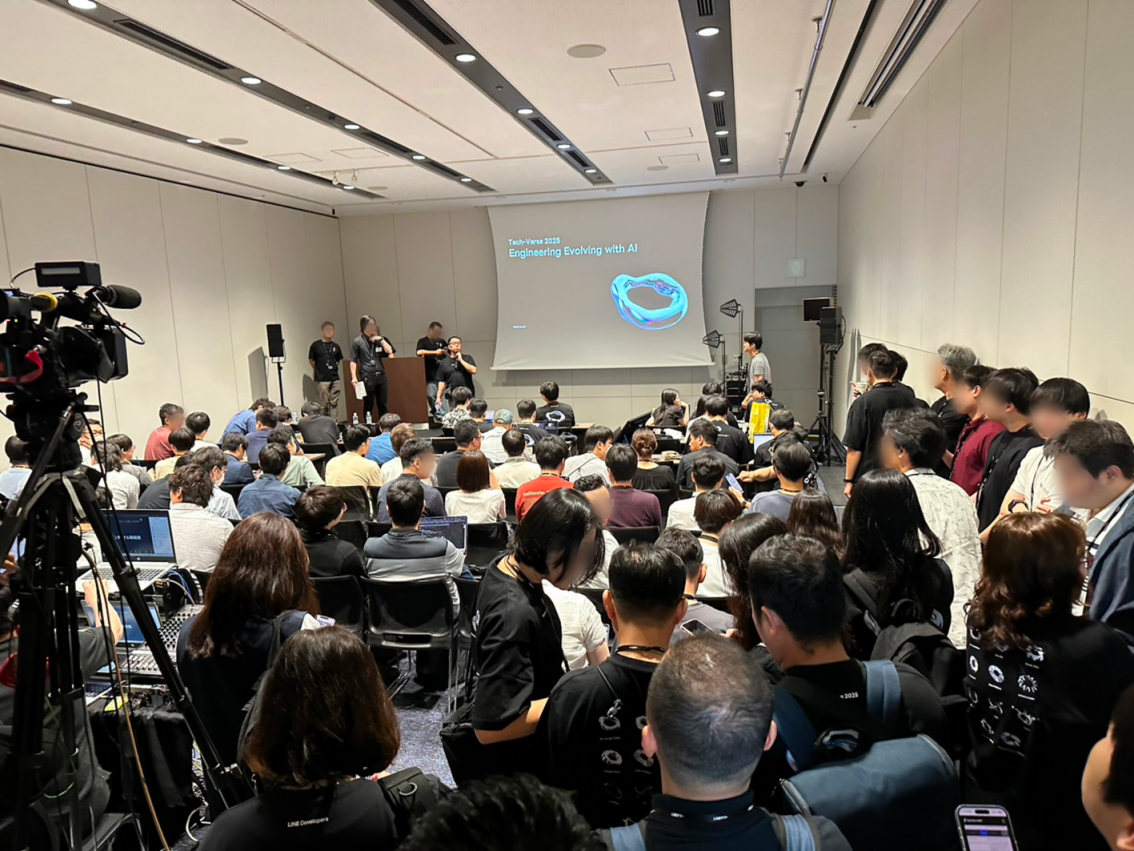
Another memorable presentation was titled How to measure the quality of AI-Generated images. Despite the recent focus on LLM and agent-centered AI technology flows, it was fascinating to see teams actively researching and applying technologies in the computer vision field. The effort to refine evaluation methods to supplement the subjective nature of image generation technology was impressive from a developer perspective.
The presentation introduced three methods for evaluating the results of image generation models: traditional distribution-based evaluations like FID (Fréchet inception distance) and IS (inception score), aesthetic standards like LAION's Aesthetic Score, LLM-based evaluations such as CLIP-IQA, Q-Align, and VQA (visual question answering) based question-and-answer approaches using video-language models. These methods provided a comprehensive understanding of analyzing the quality of generative images without predetermined answers.
During this presentation, I learned for the first time that LY Corporation has operational models for image translation and inpainting. Translating an image and naturally restoring the original text's form and arrangement isn't just OCR (optical character recognition) or translation; it's a complex task requiring new generation of layout and structure, which felt technically challenging.
Moreover, the consideration of how to evaluate and improve image generation results resonated deeply with me, as it is a realistic and crucial challenge when applying generative AI technology to actual services. The LLM-based tasks I'm currently working on aren't about finding a predetermined correct answer but to aim for "better responses", making it essential to evaluate and improve quality quantitatively. This presentation reinforced the idea that "evaluation" and "verification" create quality across generative AI as a whole, beyond just implementing technology.
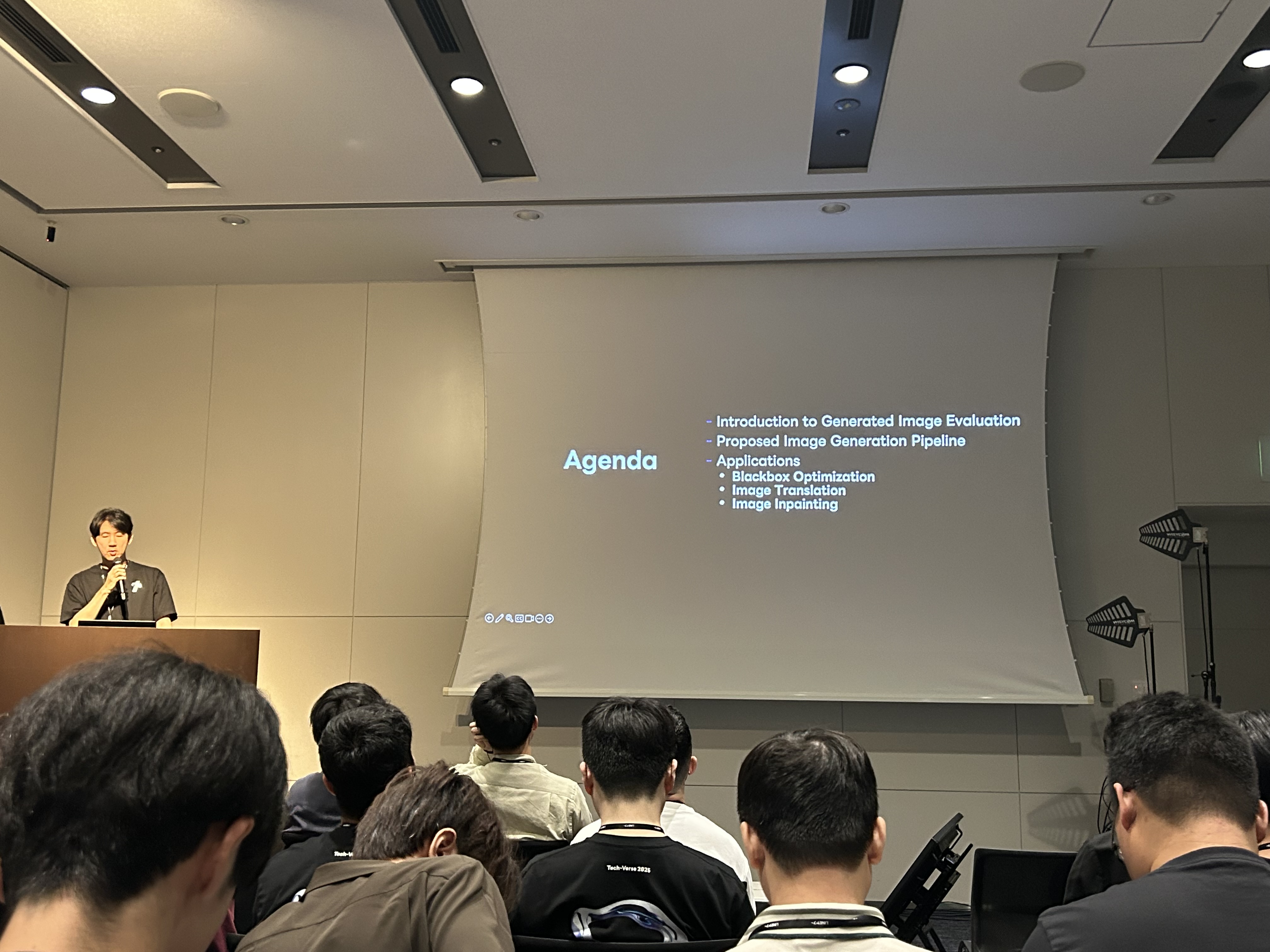
What goes on during break time
I thought it would be an event where I'd just listen to presentations all day. However, once I was on-site, Tech-Verse was more than that. There were separate communication spaces outside the presentation rooms, where people gathered in groups to hold meetings or chat. Additionally, there was a poster session titled "Product Street". Over the two days, different poster sessions were conducted, leaving no room for boredom.
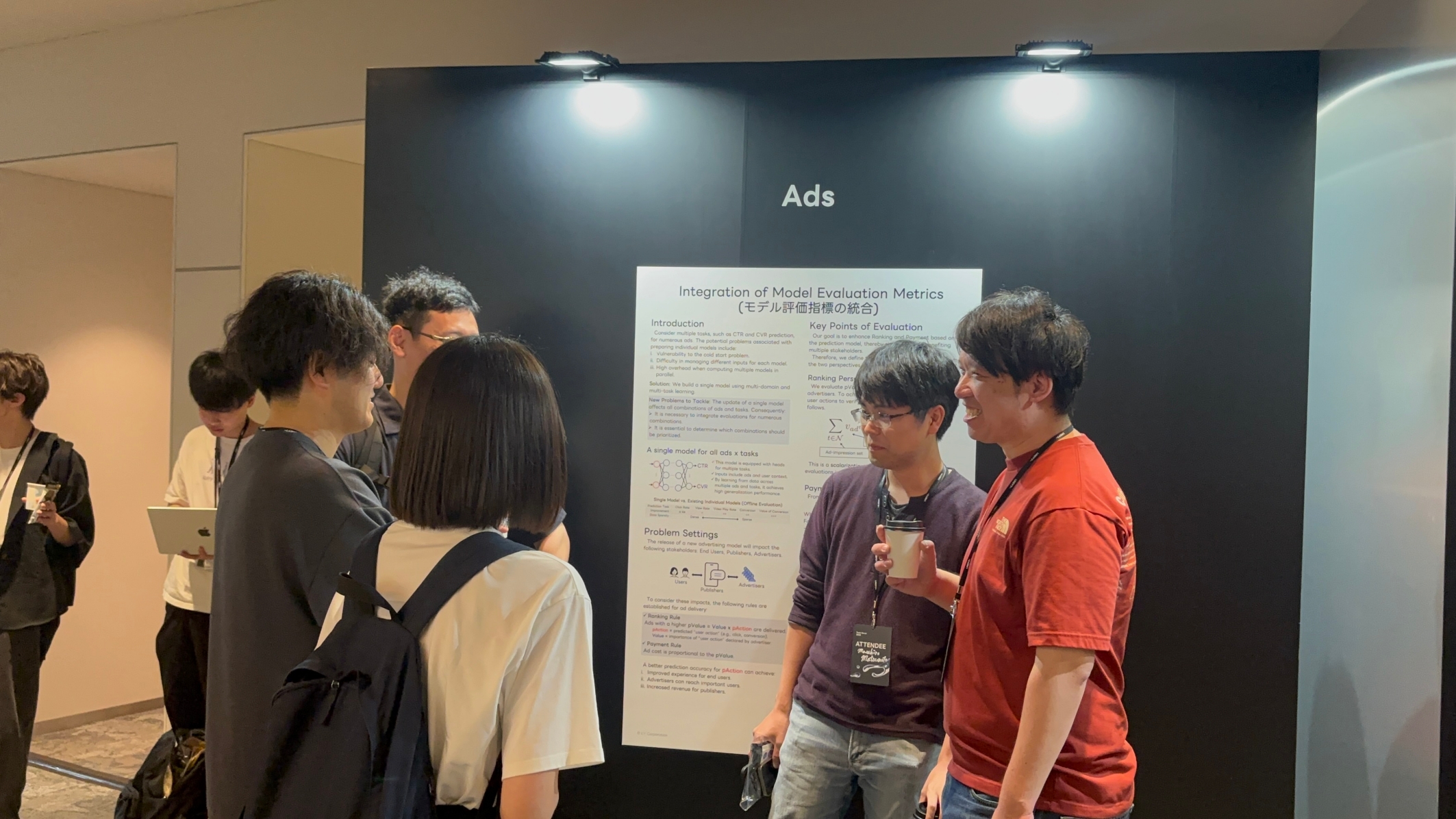
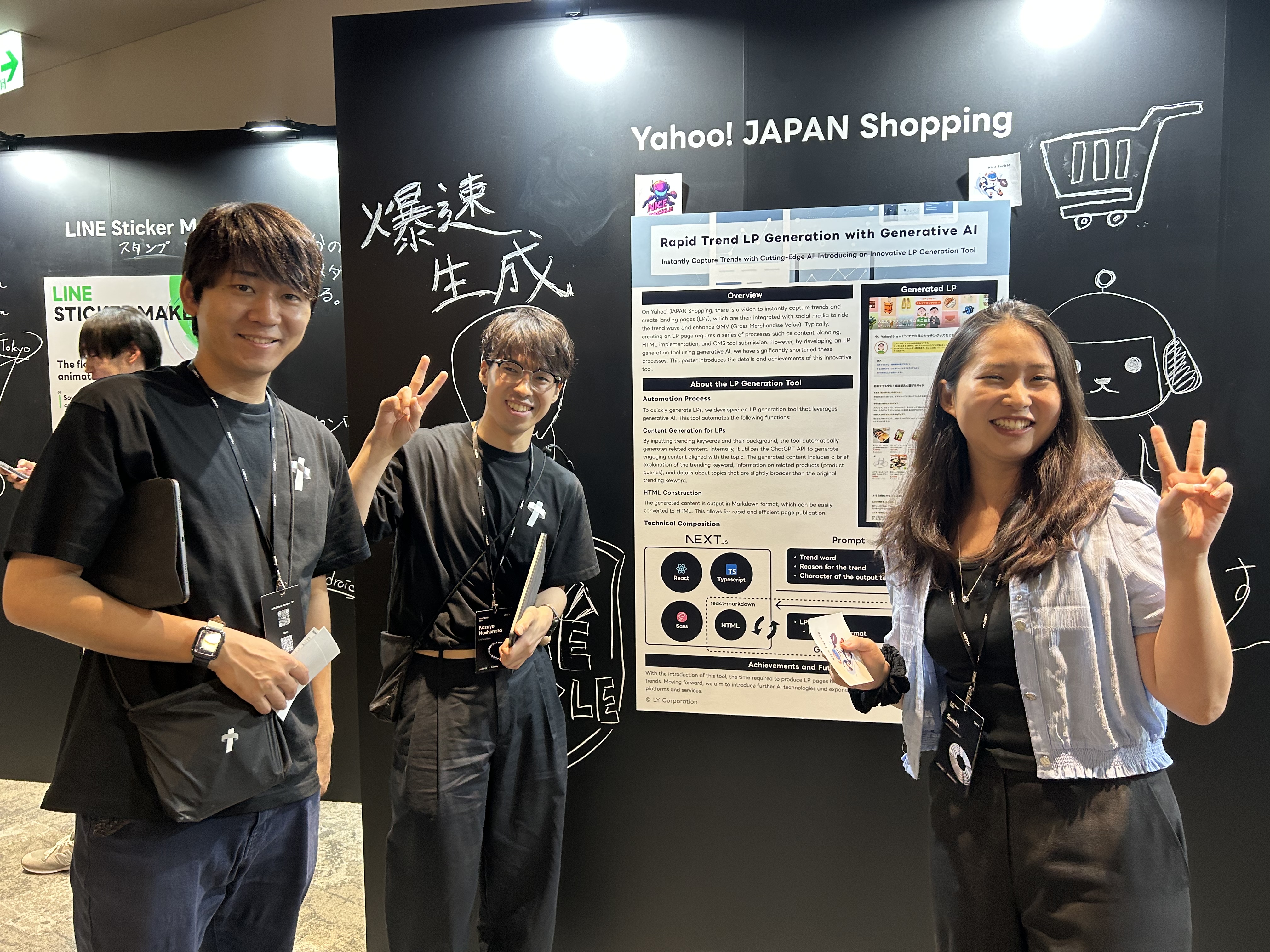
I can't leave out the snacks, meals, and coffee provided during the event. On the first day, I had lunch at a restaurant inside the Kioicho building. On the second day, I received a bento box prepared by the event organizers. The boxed lunch was Sukiyaki Bento, and eating a delicious bento made me feel like I was on a business trip in Japan.
Snacks were provided in between presentations, so I enjoyed the event in a comfortable atmosphere, feeling both mentally and physically relaxed. Also, a barista was present throughout the two days, brewing coffee on-site. The aroma and taste were so good that people were always lined up for a cup. The snacks were thoughtfully prepared and tasted so good that I would grab an extra if there were any left over.

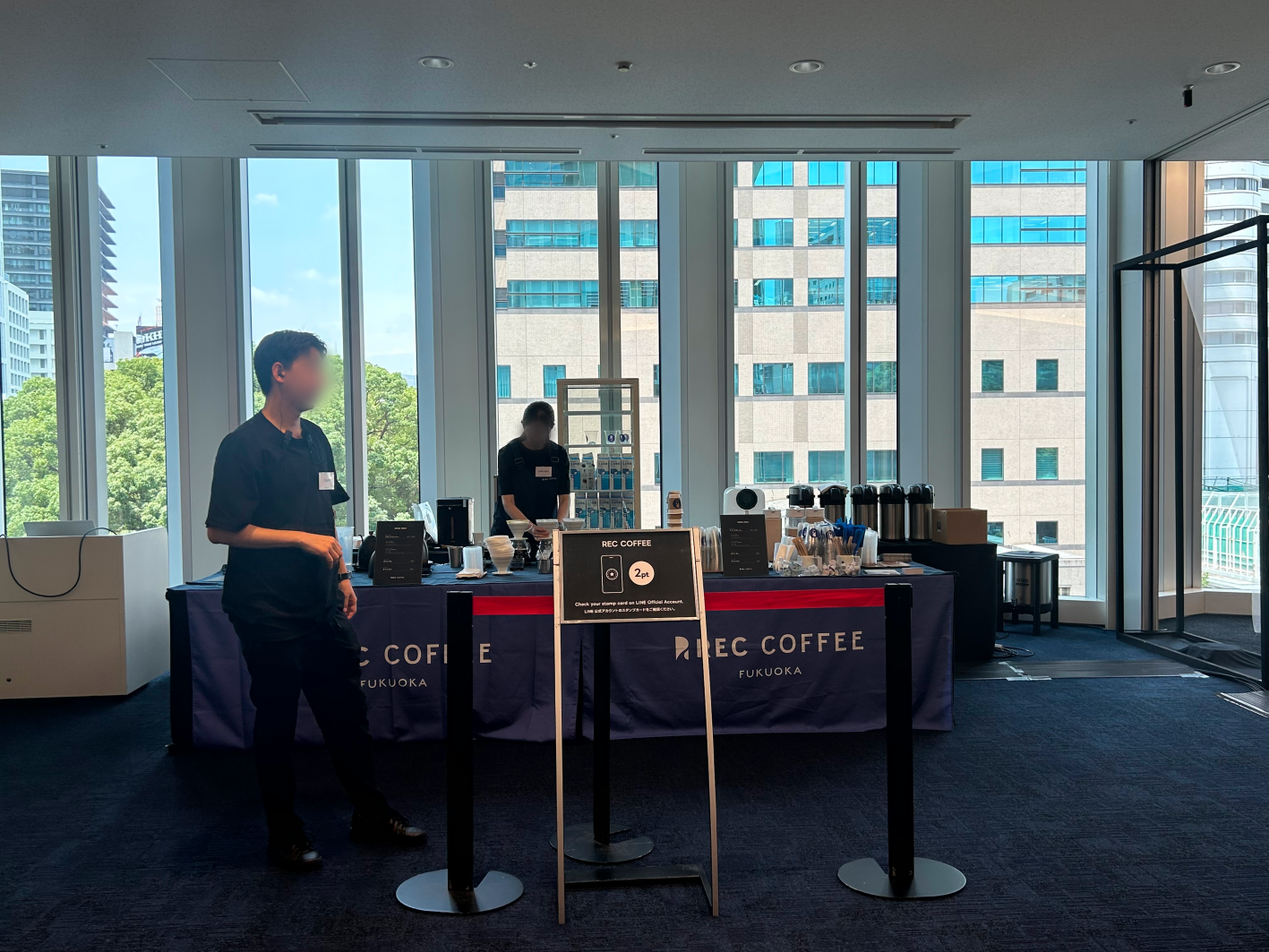
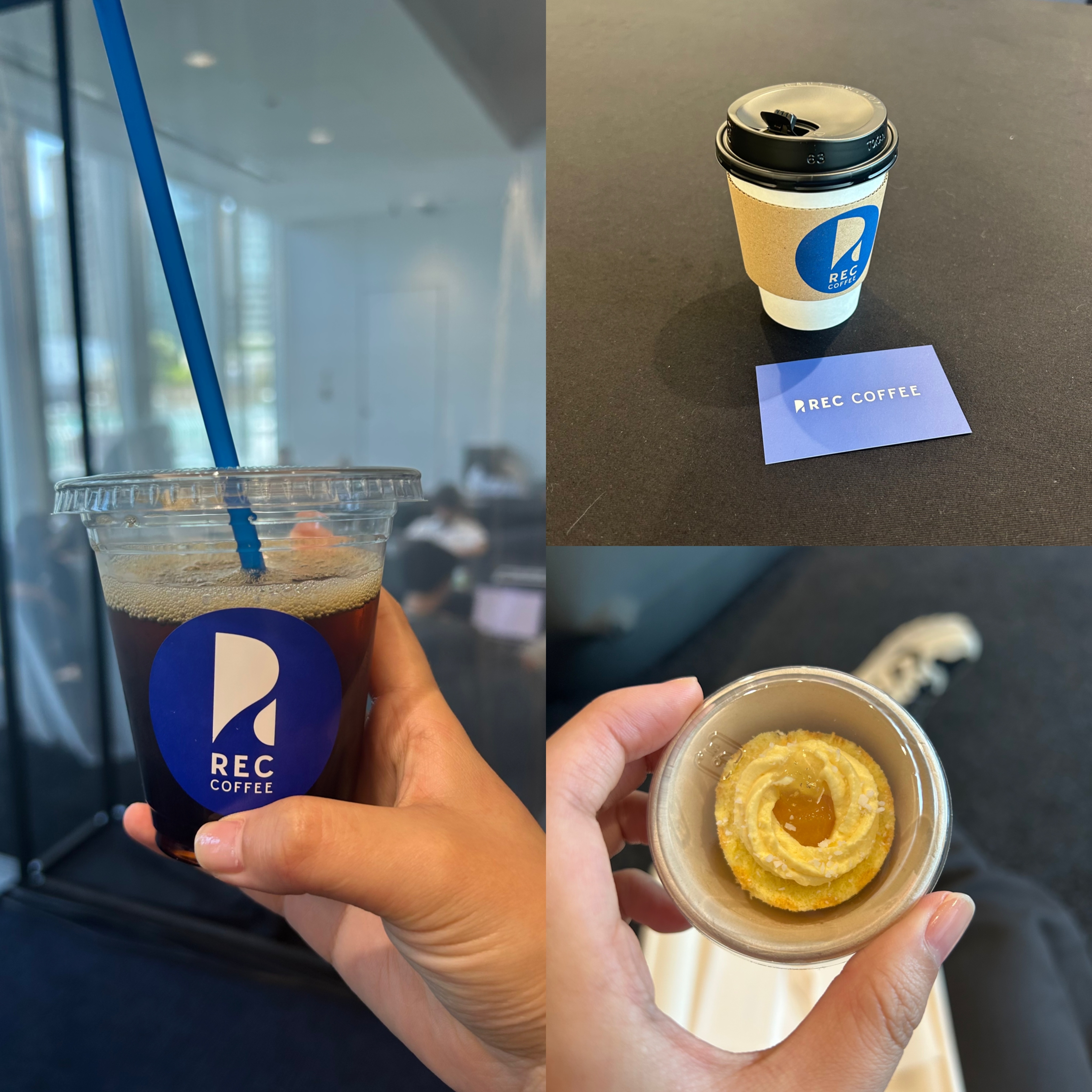
Another memorable aspect was the ability to approach presenters directly outside the presentation halls after their talks to ask questions. I was able to ask presenters about my curiosities that arose during their presentations, and having a brief direct conversation enhanced my understanding.
There was also a fun moment. After the keynote, in the first session, there was a time to pair up with those around you, greet, and chat. On the first day, I naturally greeted a new developer from the former Yahoo! JAPAN service team sitting next to me, and on the second day, I chatted with the AI TF team from Taiwan. While chatting, I was surprised to find that this team had directly worked on part of Ark Developer. The funny thing was that I kept running into this team whenever I went out to ask questions after a presentation.
An unexpected situation occurred when I tried to ask a question to a presenter who didn't speak English. A member of the Taiwanese AI TF team suddenly provided Japanese-English and Japanese-Chinese translation, garnering a lot of attention and interest from the surrounding participants. Later, it got to the point where people were waiting for that person's translations even more than the presenter's words. It was a memorable moment, making me think, "They're here to truly exchange!"
Tech-Verse day 2 - Service planning cases using AI
On the second day, presentations focused on real-world service cases utilizing LLM or generative AI services. The most memorable session was titled “LINE PLANET” and AI: Conversations with AI, dealing with the technical stack for voice-based AI agents and real application cases.
The presentation explained methods for solving issues like noise, echo, and interruption protection occurring between the STT (speech-to-text) → LLM → TTS (text-to-speech, voice synthesis) structure. It introduced techniques like turn detection for determining the end of user speech, acoustic echo cancellation based on microphone environments, and methods for minimizing network delays. It was impressive to see multiple technologies organically combined for natural conversations rather than following a simple pipeline.
This presentation reinforced the perception that voice AI isn't just about connecting input and output structures, but a synthesis of technologies aimed at resembling actual human conversations. The detailed design elements necessary to achieve both real-time responses and naturalness felt like technical challenges difficult to understand without direct implementation. It also sparked a desire in me to compose a system satisfying these complex conditions.
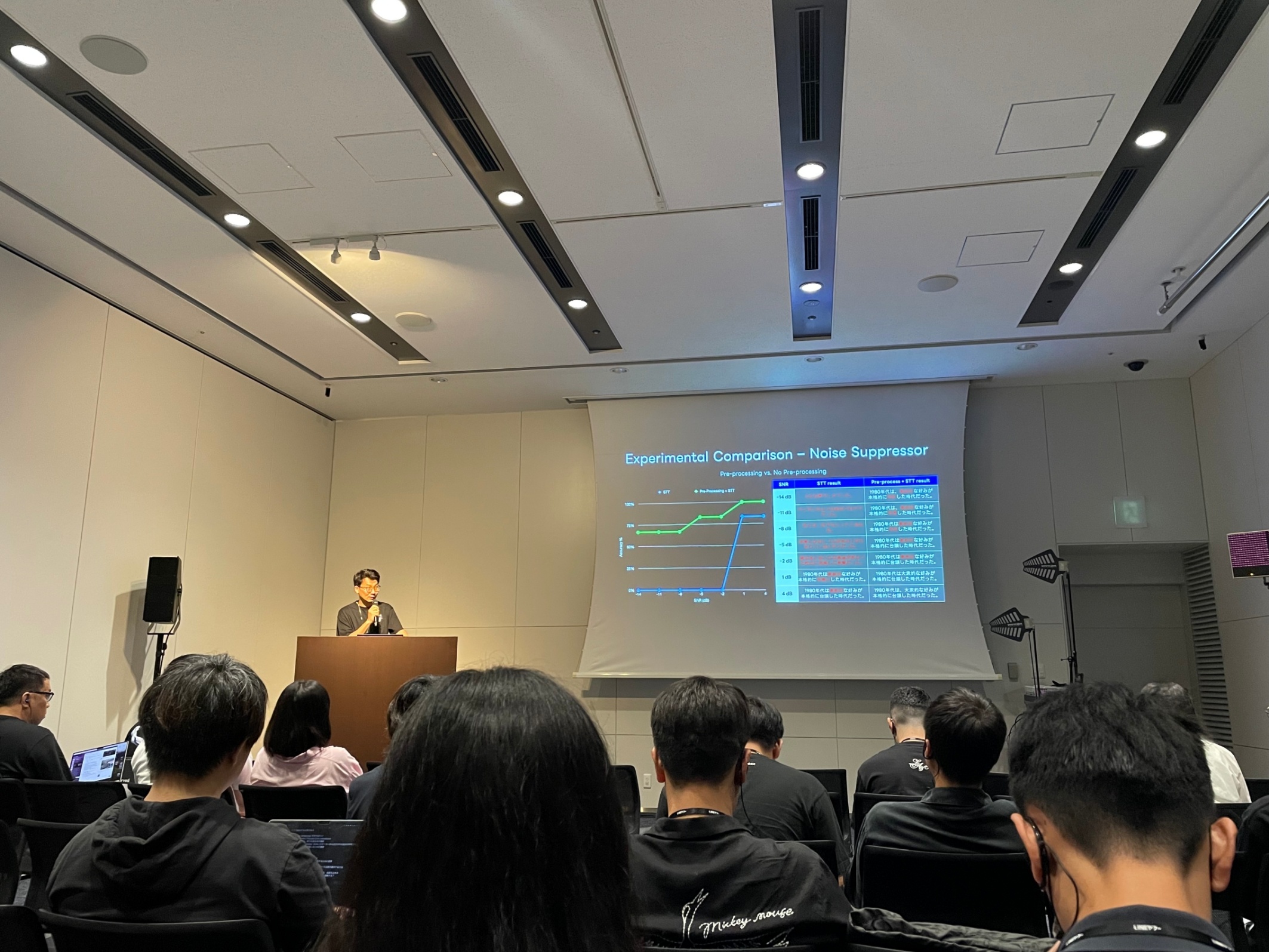
Besides voice AI, many real-life AI utilization cases were introduced through presentation sessions and poster sessions. Although I belong to LY Corporation, I didn't have many opportunities to directly engage with Yahoo! JAPAN-related services. I newly discovered that AI deeply penetrates various fields like movie reviews, ad automation, shopping, and search-based travel recommendations.
There were sessions exclusive to company employees, so I can't go into specifics, but even just looking at the titles and presentation flows of the prepared sessions hinted at their broad applications. Above all, the repeatedly emphasized message of "AI for Service" over "Technology for AI" was striking. I learned a lot from the attitude that prioritized user experience and practical value over the technology itself.
Beyond Tech-Verse to the after-party
After each day of the event, there was an after-party. A famous Japanese chef prepared the food. While enjoying delicious dishes, I had pleasant interactions with members of other teams and captured group photos, thoroughly enjoying the final moments of Tech-Verse.
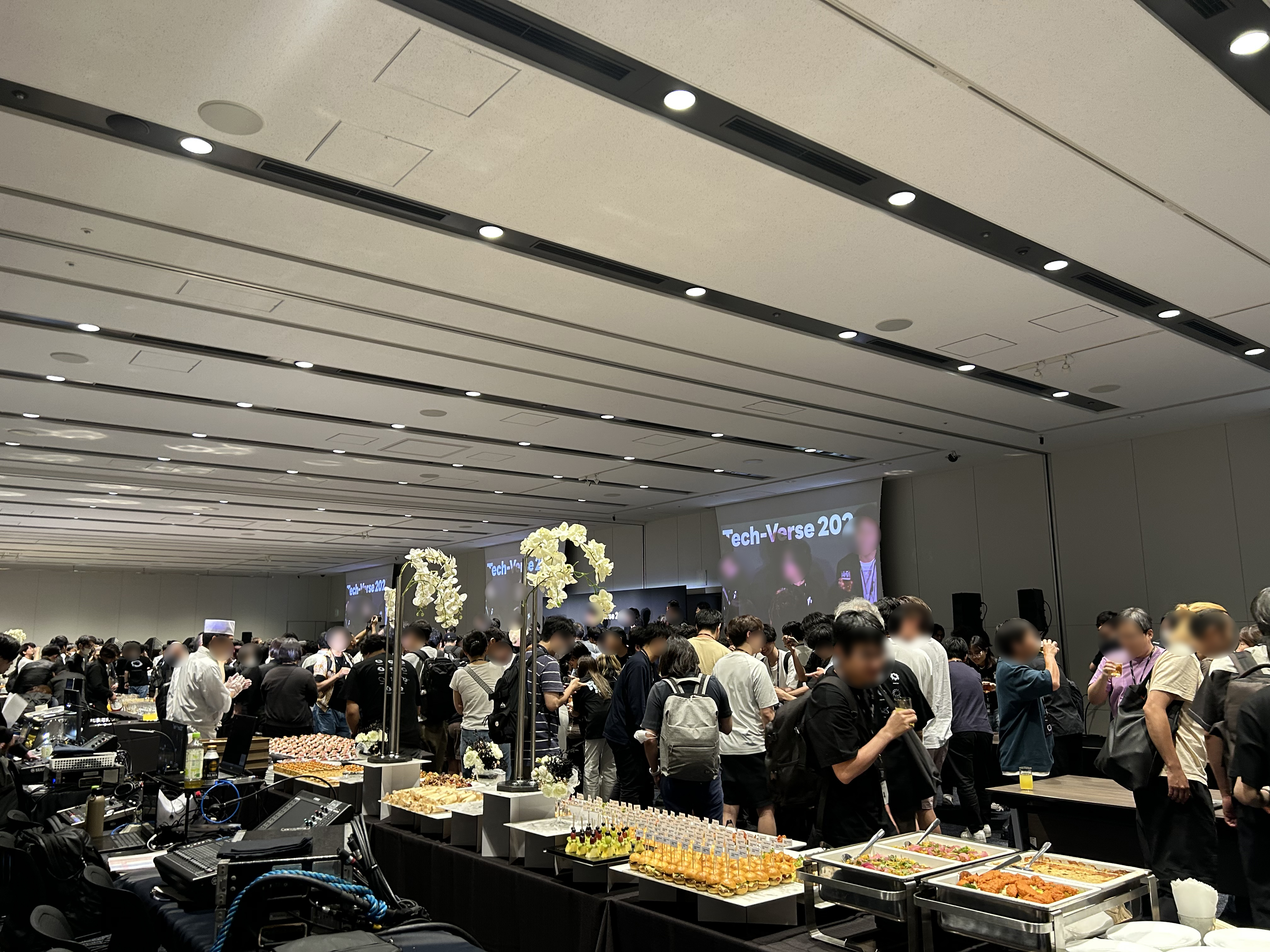
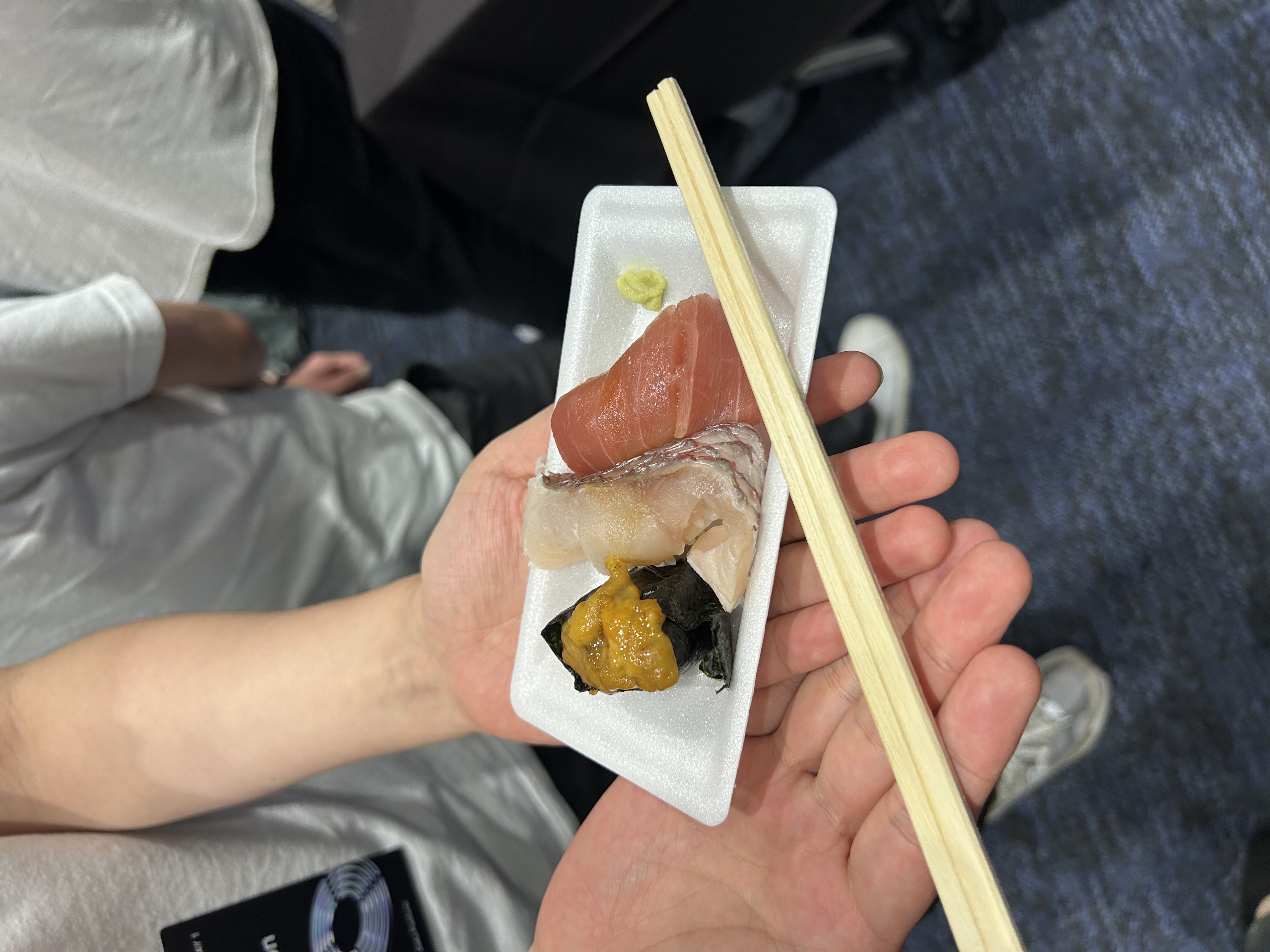
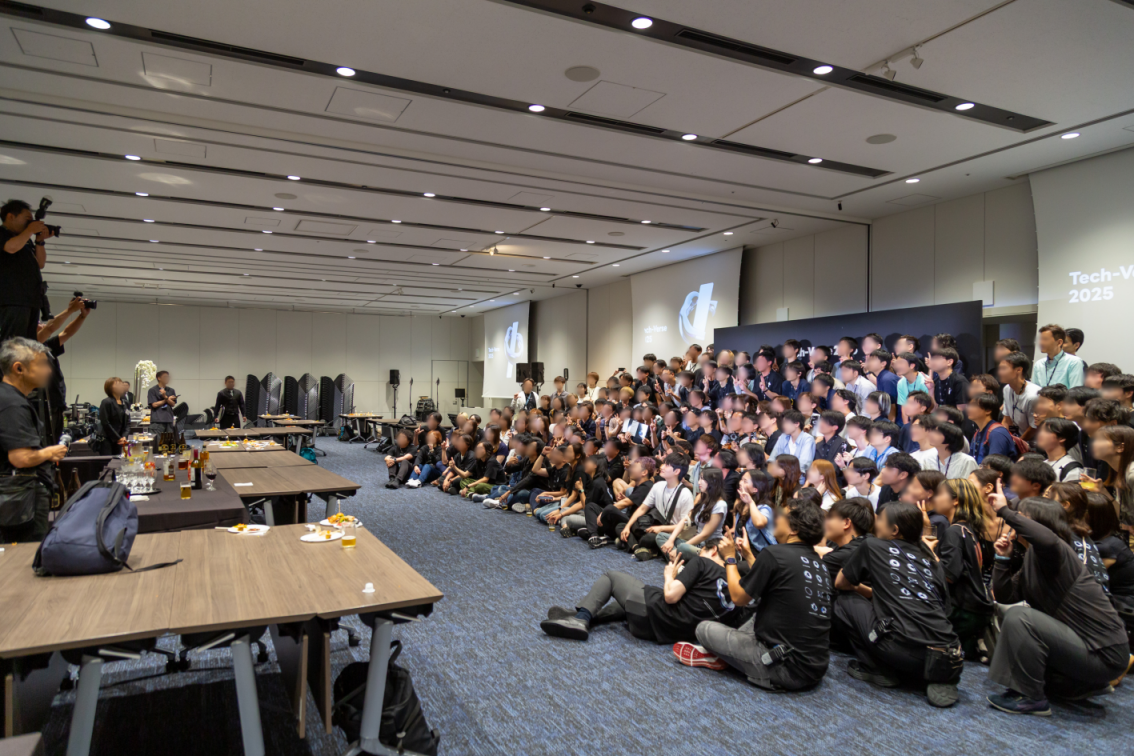
Reflecting on Tech-Verse 2025
Experiencing Tech-Verse, what struck me the most was seeing how everyone was using AI to solve a variety of problems in their respective positions, and how they were overcoming obstacles by connecting technology, service, operations, and communication as a whole. Each presentation dealt with different problems and approaches, but the commonality of solving practical issues from their positions was impressive.
Although I'm an LY Corporation developer, I didn't have many touchpoints with Yahoo! JAPAN-related services. In this event, I learned for the first time that AI is already being introduced and operating in various domains such as comment moderation, shopping experience improvement, image generation, ad automation, and so on.
I was impressed by each technology but found the intention behind integrating those technologies into real-world operations and sharing them even more striking. Although we work in the same industry and even in the same company, it's rare to get such deep insights into another team's practices to this extent. I was constantly motivated during the event, naturally wanting to do better.
This year's Tech-Verse provided a wealth of inspiration, fueling my desire to learn more, connect more, and grow further. If the next Tech-Verse opens up, I hope to stand on stage as a presenter introducing my project.
